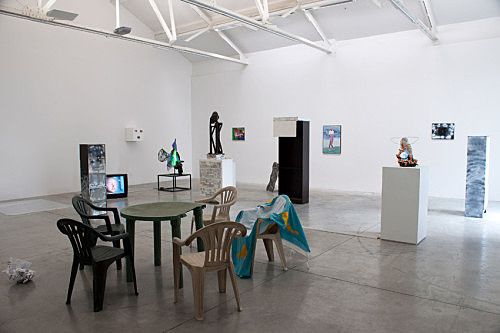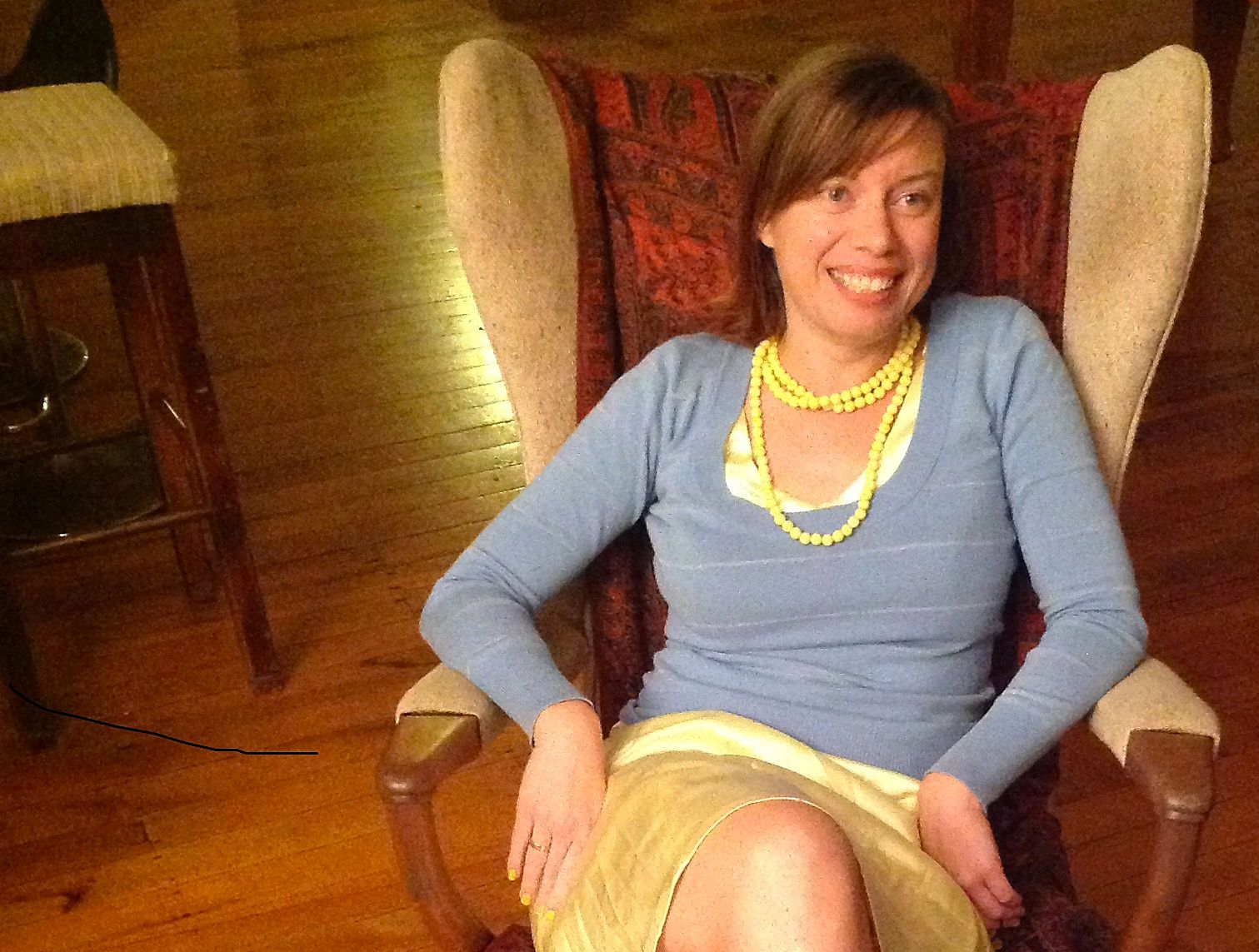Quiz: The Walters Prize Through the Ages
How much do you know about the Walters Prize, New Zealand’s premier contemporary art prize?
The four finalists for The Walters Prize - elsewhere described as New Zealand's premiere award for contemporary art as well as New Zealand's toughest art prize - is currently exhibiting at the Auckland Art Gallery. Janet McAllister reports and quizzes from the frontlines.
What are we talking about again?
(a) The Wallace Awards, since 1992
(b) The Gordon’s Walters Prize at Auckland’s artist-run Snakepit (RIP) - the winner got a bottle of Gordon's gin
(c) The George Walters Prize (as announced by the guy doing the mihi at the Walters exhibition opening, 11 July 2014)
Who hasn’t got Wallace/Walters mixed up? Last time I did was in front of the Walters curator Stephen Cleland, shame-ola. I feel like patron James Wallace got first dibs on the “Wal” prefix, and when the Walters sponsors came along ten years later, they should have chosen another namesake. Like McCahon, Hodgkins, Angus, Lye or Fomison. Cooch or Darlene. The Dog.
The aim of the Walters Prize is:
(a) To fuck off painters
(b) To fuck off late-career artists
(c) To support artists and encourage them in striving for artistic excellence (whatever that might be)
(d) To show future art historians just how damn sophisticated we were
(e) To increase the prestige of art in general, and therefore the monetary value of the sponsors’ art collections
(a) Maybe. Painting hardly ever gets chosen, but then 2-d is so commercial, darlings
(b) Maybe. The Walters isn’t a career award for longest stalactite stalwart (it’s for one “outstanding” work), but still, the youth of the finalists in general is curious. Walters finalists, and even more so your average winner, are young: the median age is 34; the average age is 37.5.
Does this reflectthe age range of NZ’s professional artists; do they all give up by age 40 and become curators and art teachers? Apparently not, according to my pseudo-semi-sciencey graph, which compares Walters Prize finalist ages with the ages of those people who self-reported as visual arts painters and sculptors in the 2006 census (2013 census was available, but 2006 is nearer the middle of the Walters Era thus far).
A whopping 43% of Walters Prize finalists have been aged between 30-34, compared to 13% of sculptors and 10% of painters in 2006. The approximate average and median ages for sculptors and painters is mid-late 40s. Thanks, Statistics NZ, for custom drilling down for me; any mistakes in the interpretation are my own. (There were more than ten times the number of painters than sculptors in the country, by the way: 2433 to 201).
te: The percentages take into account sculptors and painters of all ages, 15-85+ years; but only shown here are the age groups that include WP finalists – Phil Dadson being the eldest ever finalist (2006) at 59-60, Luke Willis Thompson being the youngest (2014) at 25-26.
Off topic: I found the year of birth for every single Walters Prize finalist on the net. Since when did it become mandatory for visual artists to disclose this piece of personal information? And why?
So the age mystery remains. Perhaps the judges are ageist; or perhaps relatively young artists are indeed more likely to be pushing boundaries. Maybe, in art, familiarity breeds contempt. The Turner Prize in the UK is specifically only open to artists under 50; maybe that provides an unconscious template?
(c) HAHAHAHAHAHAHAAAA.
(d) This would backfire so hard. Gather round children, for the cautionary tale of The Bear. It’s a novel by Marian Engel about a romance between a woman and a bear that won a big prize, the 1976 English language fiction prize in Canada’s Governor General’s Literary Awards. I didn’t believe Instagram, so I looked it up in the official lists, and sure enough it’s there, in sensible font just like all the other winners in all the other years. Alice Munro – pre-Nobel Prize – was on the jury, even. (It sheds new light on Munro’s own furry title of 20 years later, The Bear Came Over the Mountain which includes a character called Marian.)
Reactions to this piece of prize trivia come in two blame-game categories: 1. Well, it was the 1970s, what can you expect? 2. Canada, you have no excuse. Prizes are a product of time and place. The idea that The Bear might be an exceptionally excellent and damn sophisticated piece of literature is not entertained by the internet.
So who knows how et al et al will be remembered in 30 years? For the purpose of the Walters Prize, it doesn’t really matter.
(e) Whether or not this is the aim of the prize, it is the result.
The best way to achieve the declared aim of the Walters Prize, which is to make “contemporary art a more widely recognised and discussed feature of cultural life” is:
(a) To create controversy by not following due process when commissioning public art
(b) To make artists compete against one another
(c) To choose one artist and give her or him both the prominent NZ art plums – Venice Biennale commission and Walters Prize
(d) To make up quizzes about it
(a) Well it’s true that discussion ensues. Yet what a travesty, curdling whatever the artwork was supposed to be about. It instigates discussion that obscures the art rather than being generated by the art. Maybe “valued” needs to be added to the Walters goal.
(b) Well it’s true that discussion ensues. However, the discussion tends to be: who should win, who shouldn’t; who should have got nominated but didn’t; whose project is better than whose. In other words, the discussion is often about ranking and politics, not about the art itself.
(c) Well it’s true that discussion would ensue. But it would all be about one artist. The promotion and financial support of one artist and one name masks the diversity and depth of the contemporary art scene, instead of promoting contemporary art in general. An artist should not be eligible for the Walters Prize at the same time as they’ve been commissioned for Venice. Simon Denny has been nominated twice for the Walters – currently and in 2012 – as well as being the 2015 New Zealand artist at the Venice Biennale. If he wins the Walters, he’ll take up all the contemporary arts capacity on the 6 o’clock news for 2014-2015. Denny is not the only one bridging Walters and Venice – as Over The Net recorded in 2009. Since then, Michael Parekowhai and Bill Culbert have shown at Venice – neither of which (yet) has been nominated for the Walters Prize. (Perhaps Parekowhai’s state house will be the first public artwork to be nominated for the Walters. At least I don’t think any other public artworks have been nominated? It’s about time. But maybe not the process-controversial one.)
(d) You win! Discuss.
The prize doesn’t take applications. This is
(a) A conspiracy
(b) A relief
Both. Fringe gigs, even good ones, find it hard to get public profile – particularly as visual arts commentary is shrinking. This is a problem, not only for the Walters Prize but for art in general, in a scene where much excellent art happens outside dealerships. You better be good at publicity, aspiring artists; it would help to have an advertising budget also. On the other hand, Jacinda Ardern got a cheer at DANZ’s election arts policy debate in Auckland by promising to do something so that good art, not good applications, got funded. Having a prize that doesn’t require forms in triplicate should be celebrated.
The re-staging of the finalists from their original exhibitions is
(a) Difficult, but the creative tension of responding to a new context can create new meaning.
(b) Outmoded. It ignores the possibility of art as event. The artists become their own covers band.
(c) A good chance for the public to see the ‘best’ all in one space, including NZ exhibitions from overseas.
If you work it out, can you let me know, please?
As well as the 50 grand, the “winning artist receives a fully supported trip to New York with the opportunity to exhibit at Saatchi & Saatchi's world headquarters”. This Saatchis prize
(a) Shows how corrupt the art world is
(b) Is just part of life these days
(c) Is going to bite Saatchis on the bum if ‘Uhila wins it – will he live homeless around the ad agency?
I fucking hate it when art whores itself to advertising. You’re being used to advertise the advertisers, but your art is still deeper than someone’s graphic design for petroleum company ads? No it isn’t. Own that you’re owned. Saatchis is smarter, richer and more cynical than you. They win.
The award winner should be:
(a) The objective best
(b) The most controversial
(c) Chosen by lottery
C -lottery! Four artworks over two years? They should all be of winning standard. And if it were a lottery, we’d still have one name to garner publicity (one name garners more publicity than four put together, weirdly, I reckon) but the discussion of “X is better than Y” would hopefully die down a little.
[/box]
Read Janet's essay on the four finalists of this year's Walters Prize here



